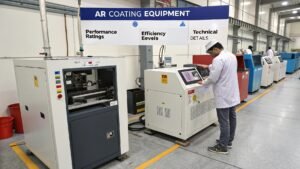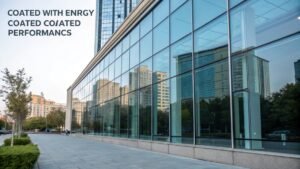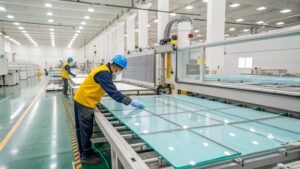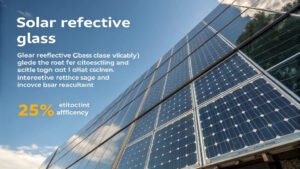Thin film solar cells face efficiency challenges without proper material processing. Poor CdTe layer activation reduces power output and manufacturing yields. Advanced coating machines now solve these problems with precision CdCl₂ deposition technology.
Cadmium Telluride coating machines apply CdCl₂ treatment layers that enhance CdTe grain growth and electrical properties, improving thin film PV cell efficiency by 15-25% through controlled recrystallization processes and optimized interface formation.

I remember when we first developed our CdTe coating system at Glass Coat. The breakthrough came from understanding how precise CdCl₂ application transforms semiconductor properties. Now I see manufacturers achieving remarkable efficiency gains that seemed impossible just five years ago.
How Does CdCl₂ Treatment Enhance Cadmium Telluride Solar Cell Performance?
CdTe thin films require post-deposition treatment to achieve commercial efficiency levels. Raw CdTe layers show poor electrical properties without proper activation. Understanding this treatment process determines manufacturing success.
CdCl₂ treatment promotes CdTe grain growth, reduces defect density, and creates proper p-type doping through controlled diffusion processes, transforming polycrystalline CdTe into high-efficiency photovoltaic material with improved carrier collection.
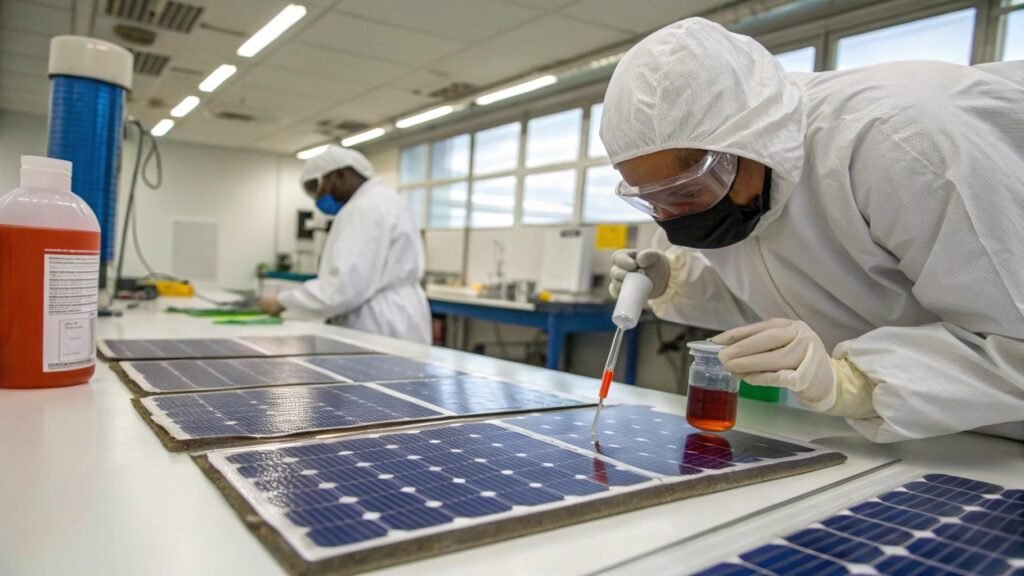
The CdCl₂ activation process works through several mechanisms that fundamentally change CdTe material properties. During heat treatment, CdCl₂ promotes grain boundary migration and grain growth, reducing the density of grain boundaries that act as recombination centers. This process significantly improves minority carrier lifetime and collection efficiency.
Critical Process Parameters
Temperature control during CdCl₂ treatment determines success. The process typically occurs at 380-420°C, where CdCl₂ becomes sufficiently mobile to promote grain growth without damaging the underlying CdS window layer. Too low temperatures fail to activate the CdTe properly, while excessive temperatures can interdiffuse the CdS/CdTe junction.
The CdCl₂ application method affects uniformity and results. Our thin film CdTe PV technology uses high-precision micro-spray systems that deliver uniform CdCl₂ distribution across large substrates up to 1220×2440mm with ±5% uniformity. This consistency ensures predictable performance across the entire panel area.
Microstructural Transformations
The treatment creates several beneficial changes in CdTe structure:
| Property | Before Treatment | After CdCl₂ Treatment | Impact |
|---|---|---|---|
| Grain Size | 0.1-0.5 μm | 1-5 μm | Reduced grain boundaries |
| Carrier Lifetime | <1 ns | 10-100 ns | Improved collection |
| Doping Level | Low/variable | Controlled p-type | Better junction formation |
| Interface Quality | Poor adhesion | Enhanced contact | Reduced resistance |
Chlorine incorporation during treatment also creates beneficial point defects that help establish proper p-type conductivity in CdTe. This controlled doping is essential for creating the electric field needed for efficient charge separation and collection.
What Manufacturing Advantages Do Advanced CdTe Coating Systems Provide?
Production efficiency and yield directly impact thin film PV profitability. Traditional CdCl₂ application methods create inconsistent results and material waste. Modern coating systems address these challenges with precision control.
Advanced CdTe coating systems achieve 99%+ uniformity across large substrates while reducing material consumption by 30-40% through precise micro-spray technology and automated process control.
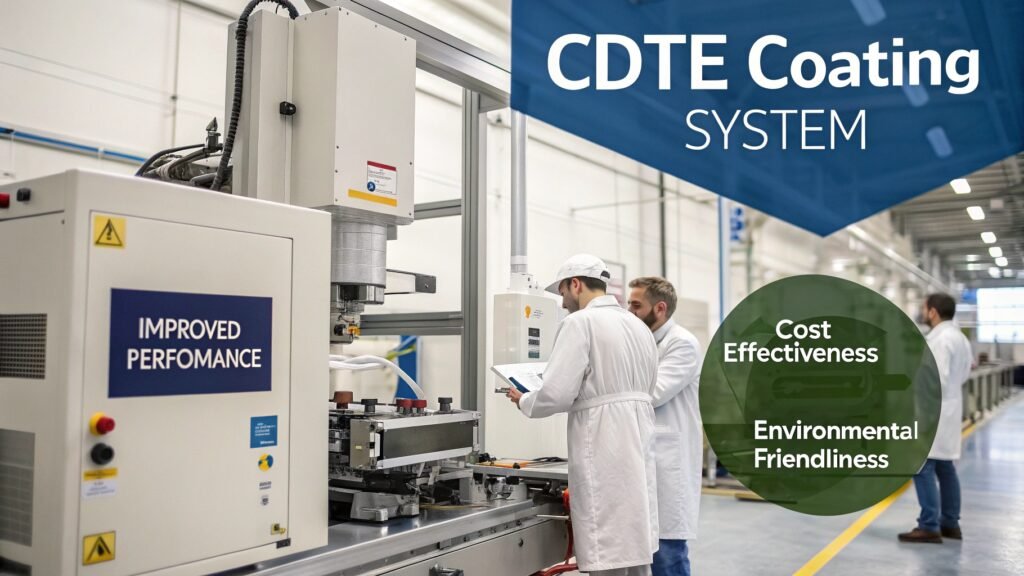
Manufacturing benefits begin with material utilization efficiency. Traditional dip-coating or brush application methods waste significant amounts of CdCl₂ solution. Our micro-spray approach delivers precise amounts exactly where needed, reducing waste and lowering operating costs.
Production Scale Capabilities
Large-format capability sets modern systems apart from laboratory-scale equipment. Commercial CdTe production requires coating substrates up to 1220×2440mm with consistent quality. The coating system must handle these dimensions while maintaining temperature uniformity during the subsequent annealing process.
Automation reduces labor costs and improves consistency. Human operators cannot maintain the precision needed for optimal CdCl₂ application across large areas. Automated systems ensure repeatable results regardless of shift changes or operator skill levels.
Quality control integration provides real-time feedback. Modern coating lines incorporate monitoring systems that track solution concentration, spray uniformity, and substrate temperature. This data helps maintain process control and identify issues before they affect product quality.
Environmental and Safety Considerations
CdTe processing requires careful attention to environmental and safety factors. The coating system must contain and recover overspray to prevent workplace exposure. Proper ventilation and filtration systems protect workers while minimizing environmental impact.
Our perovskite material coating and annealing line demonstrates advanced environmental controls applicable to CdTe processing. These systems include comprehensive containment and recovery systems that meet strict industrial hygiene requirements.
Process integration with other production steps affects overall efficiency. The CdTe coating line must coordinate with CdTe deposition, annealing, and back contact formation equipment. Proper material handling between process steps prevents contamination and damage.
How Do CdTe Curing and Annealing Systems Optimize Solar Cell Efficiency?
Curing and annealing determine whether CdCl₂ treatment delivers expected efficiency gains. Temperature profiles, atmosphere control, and cooling rates all affect final cell properties. Optimized thermal processing unlocks CdTe's full potential.
CdTe curing systems use controlled temperature profiles from 350-450°C with precise atmosphere management to activate CdCl₂ treatment, achieving grain sizes of 2-5 μm and carrier lifetimes exceeding 10 ns for high-efficiency solar cells.
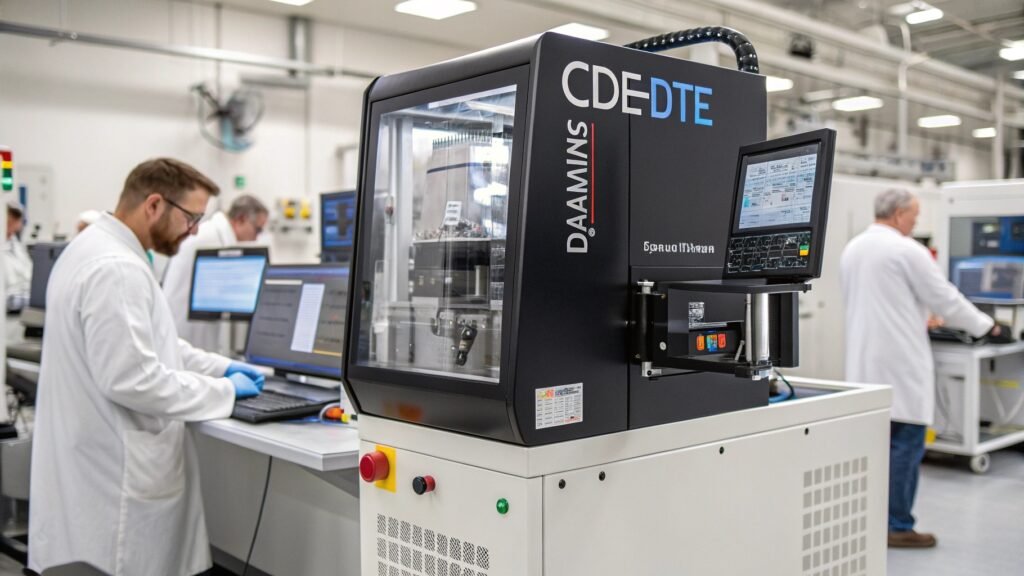
Thermal processing parameters require careful optimization for each production line. The heating rate affects how CdCl₂ distributes through the CdTe film. Too rapid heating can create non-uniform activation, while excessive slow heating wastes energy and reduces throughput.
Temperature Profile Design
The annealing cycle typically involves multiple stages with specific purposes. Initial heating to 200-250°C drives off residual solvents and moisture. The main activation occurs at 380-420°C where CdCl₂ promotes grain growth. Controlled cooling prevents thermal stress that could crack the thin films.
Atmosphere control during annealing affects results significantly. Oxygen partial pressure influences CdTe stoichiometry and electrical properties. Most commercial processes use air annealing, but some applications benefit from controlled oxygen or forming gas atmospheres.
Process monitoring ensures consistent results across production runs. Temperature sensors throughout the heating chamber verify uniform heating. Gas analyzers monitor atmosphere composition. These measurements help maintain optimal conditions for CdCl₂ activation.
Integration with Production Flow
Annealing system design must consider production throughput requirements. Continuous belt furnaces offer high throughput for large-scale manufacturing. Batch systems provide better temperature control for research applications or specialized products.
Our experience shows that proper annealing system design pays dividends through improved yields and consistent quality. The investment in temperature control and monitoring equipment typically recovers within 12-18 months through reduced rework and higher efficiency cells.
Performance Optimization Strategies
Several factors optimize annealing performance:
| Parameter | Typical Range | Impact on Performance | Control Method |
|---|---|---|---|
| Peak Temperature | 380-420°C | Grain growth rate | PID controllers |
| Heating Rate | 5-15°C/min | Uniformity | Programmable profiles |
| Dwell Time | 10-30 minutes | Activation completeness | Timer control |
| Cooling Rate | 2-10°C/min | Stress management | Controlled zones |
The annealing system also integrates with other production equipment. Our photovoltaic glass ARC line demonstrates how thermal processing equipment coordinates with coating and handling systems for optimal production flow.
What Equipment Selection Criteria Matter for CdTe Thin Film Production?
Equipment selection determines long-term production success and profitability. Different coating technologies suit various scales and quality requirements. Smart manufacturers evaluate technical capabilities alongside economic factors.
CdTe coating equipment selection should prioritize uniformity control, large-format capability, material utilization efficiency, and environmental compliance, with systems capable of ±5% uniformity across 1220×2440mm substrates.
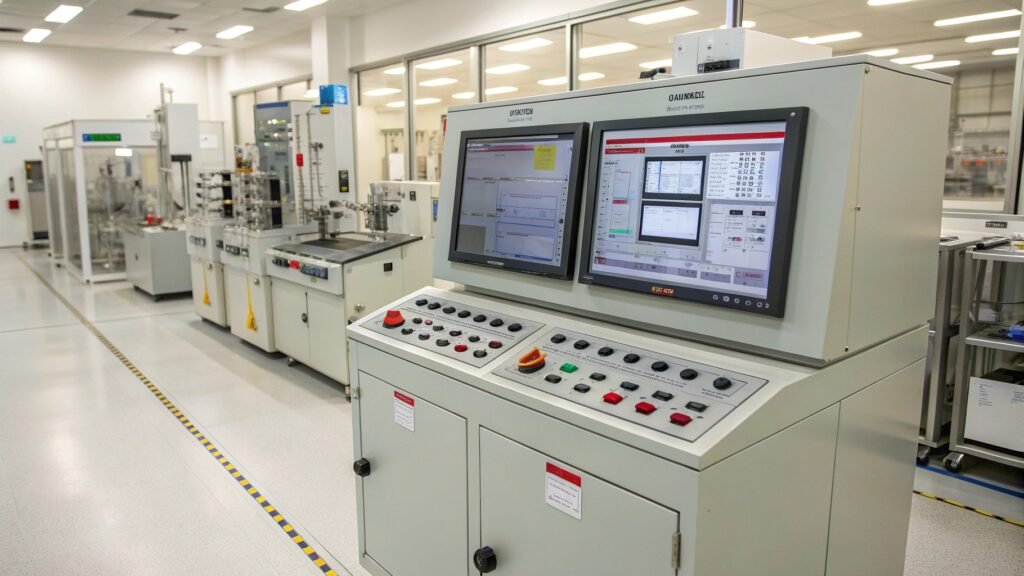
Equipment evaluation begins with understanding production volume and quality targets. High-volume manufacturers need automated systems with rapid processing and minimal downtime. Research facilities may prioritize flexibility and precise control over throughput.
Critical Technical Specifications
Coating uniformity directly affects solar cell efficiency and yield. Our CdTe coating systems achieve ±5% uniformity across large substrates through precision micro-spray technology and optimized chamber design. This consistency translates to predictable cell performance and reduced sorting requirements.
Material utilization efficiency impacts operating costs significantly. CdCl₂ solutions represent a substantial portion of processing costs. Systems that minimize waste through precise application and solution recovery provide better long-term economics.
Environmental compliance requirements vary by location but generally require comprehensive containment and emission control. The coating system must include proper ventilation, filtration, and waste management capabilities to meet regulatory standards.
Technology Comparison for Production Scale
Different application methods offer specific advantages for CdTe processing:
| Method | Uniformity | Throughput | Material Use | Capital Cost |
|---|---|---|---|---|
| Micro-spray | Excellent | High | 95%+ efficient | Medium-High |
| Slot-die | Very Good | Very High | 90%+ efficient | High |
| Screen Print | Good | Medium | 80-85% efficient | Medium |
Integration capabilities affect total system efficiency. The CdTe coating line must work with glass handling, CdTe deposition, annealing, and back contact systems. Proper automation prevents bottlenecks and reduces labor requirements.
Training and support determine implementation success. CdTe processing requires specialized knowledge about semiconductor physics and process chemistry. Comprehensive training programs ensure operators understand the relationships between process parameters and cell performance.
Conclusion
Cadmium Telluride coating machines enable efficient thin film PV production through precise CdCl₂ application and controlled annealing, delivering 15-25% efficiency improvements with advanced manufacturing capabilities.


